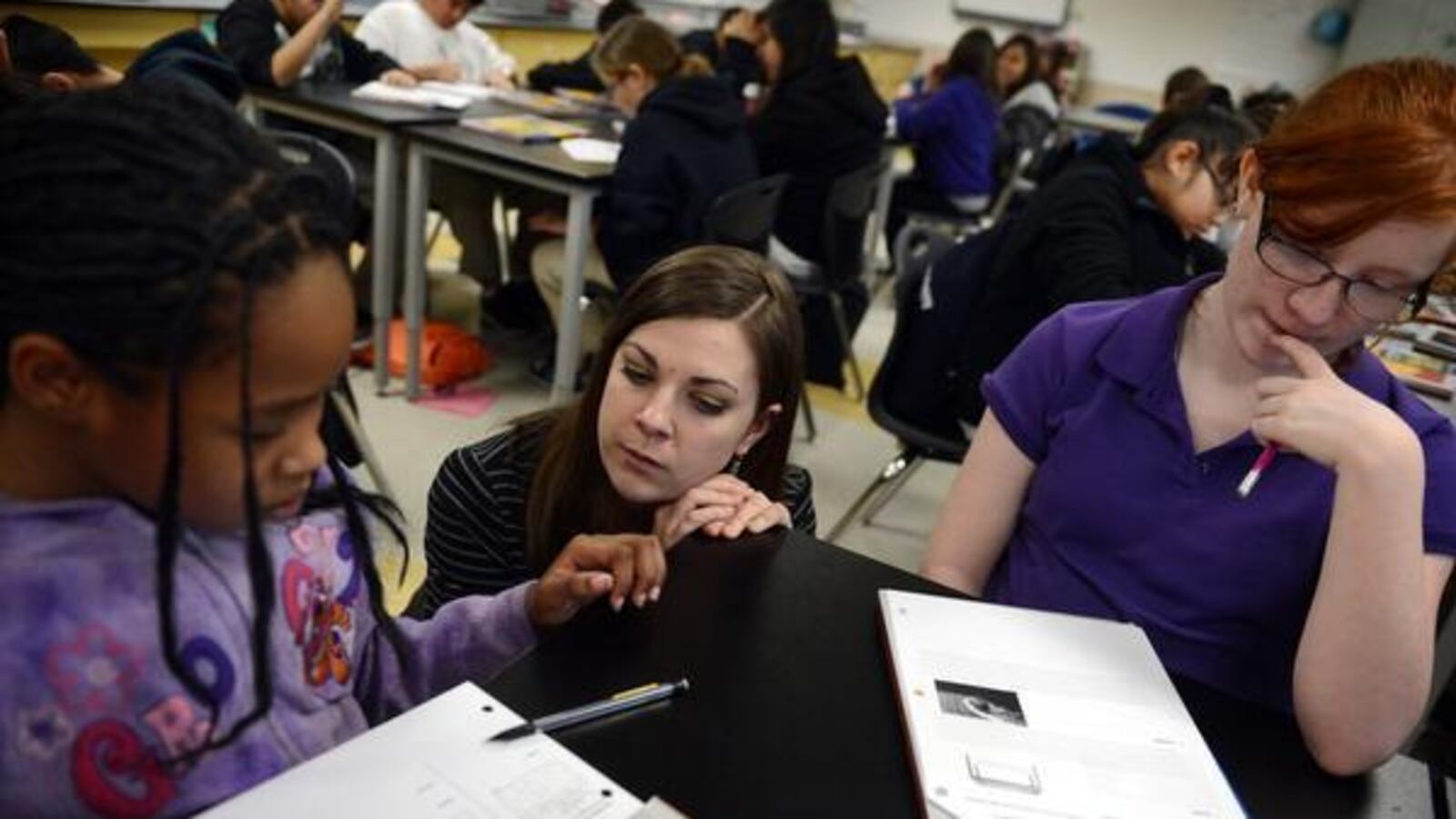Testing data for Colorado’s longest-struggling schools and districts show mixed trends.
Results released Thursday are from exams students took last spring, before the State Board of Education approved corrective action plans for the five districts and a dozen schools that had run out of time on Colorado’s accountability clock.
The Pueblo City 60 district saw a decline across many tests and grade levels while Westminster Public Schools showed improvements in 10 of 14 English and math tests.
Those districts, like other districts and schools facing state intervention this past school year, were already making changes before their state improvement plans were finalized. Much of that work is incorporated into the plans.
Thursday’s test data will be used toward a new state rating, one which these districts and schools must improve soon. The state plans gave most schools and districts until 2019 to earn a higher quality rating for face potential consequencs. But some, including the Adams County School District 14 and Adams City High School in Commerce City, must have a higher rating by 2018.
The district of almost 7,500 students saw some improvements, but still is posting very low scores. For instance, 9.3 percent of fifth-grade students met the state’s learning goals in math, up from 7.9 percent last year. In that area, the district did better than the state, as fewer fifth graders did well on math tests statewide than last year.
At Adams City High School, growth scores, which represent how much students learned in a year compared to similar-performing students, decreased for both math and English. The school had an interim principal for much of the school year, which led to a student walkout in the spring.
Overall, Adams 14’s proficiency numbers are still lower than state averages.
Of these low-performing districts, the Pueblo City 60 district, which faced state action only for some of its schools but not as a district, was the only one that had decreases in growth scores for both English and math tests.
In English, the growth score was 43, down from 47 last year. That means students this year scored on average better than just 43 percent of Colorado students who had similar test scores last year.
The Pueblo district saw an increase in how many students met or exceeded expectations in eighth-grade English. One possible reason officials pointed to: innovation schools granted flexibility from some rules and state laws.
Dalton Sprouse, a district spokesman, said district officials are relatively pleased with the improvements they see in the data, especially when broken down by school.
“Given that there’s just two years of growth data, some of the fluctuation could be expected,” Sprouse said. “We see this as we’re maintaining the progress we made last year.”
Sprouse noted that two of the three schools that faced the state board earlier this year for low performance saw big increases in the number of students meeting math expectations.
“Some progress is starting to take place,” Sprouse said. “The assessment office is already working with principals to really dig into that data.”
Westminster Public Schools, another district that faced state action this year and is now on a three-year improvement plan, saw more improvements than the other districts on the state watchlist.
“We are pleased to see our focus on high expectations and personalized learning for all students is paying off,” Superintendent Pamela Swanson said in a statement.
The Westminster district, however, was also one of the only districts in the metro area where English language learners had worse growth scores than native English speakers in both math and English. Last year, there was no gap in growth on English tests.
Last year, about 40 percent of students in Westminster schools were English language learners.
In Adams 14 schools, where about 46 percent of students are English language learners, those students posted higher growth scores than native English speaking students.
Westminster did increase their overall rate of growth according to median growth scores, and reached above 50 for English language arts.
Aurora Public Schools, the only district at risk of state action next year, posted increases and also got one growth score above 50, which is critical to catch students up when they are behind grade level.
Here’s how districts that ran out of time on Colorado’s accountability clock — or districts that had schools that did — compared:

